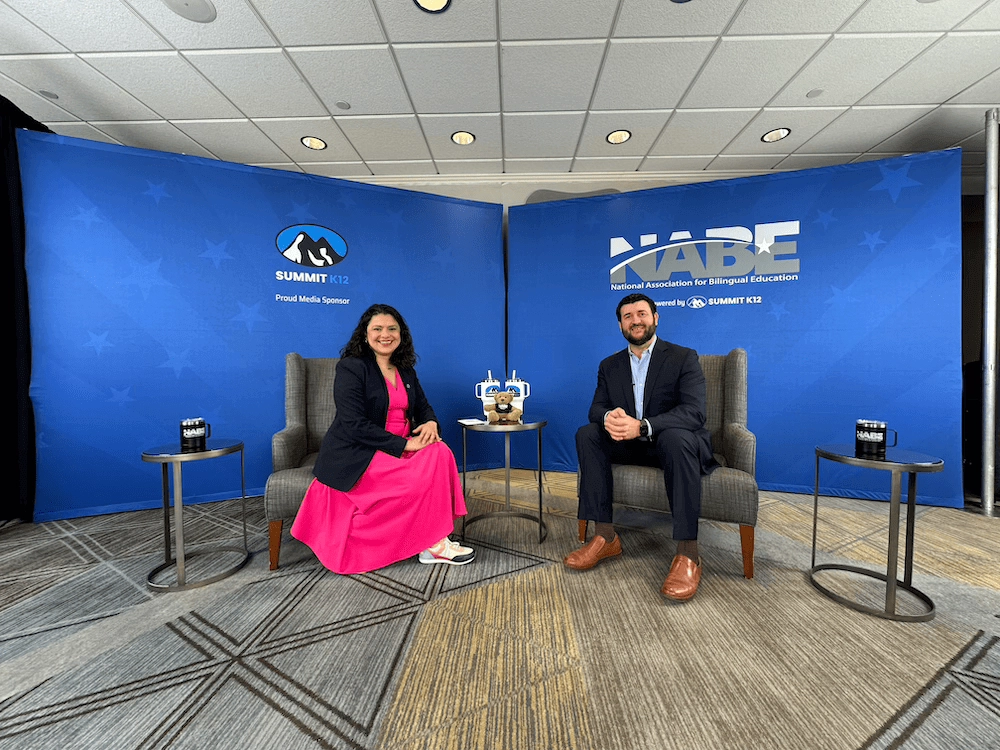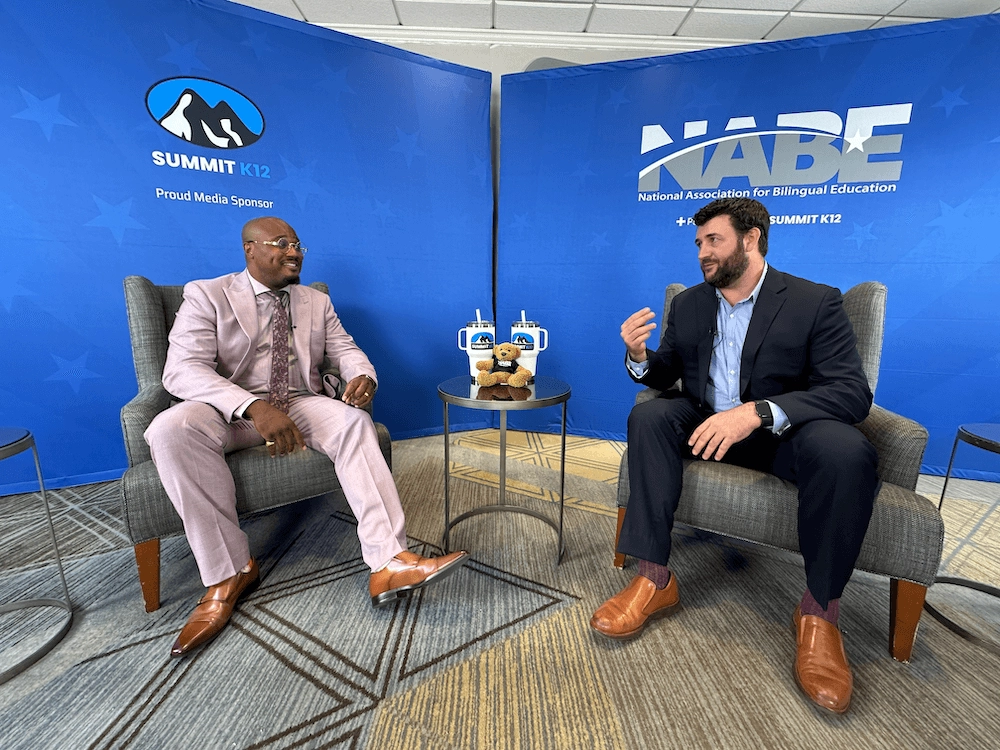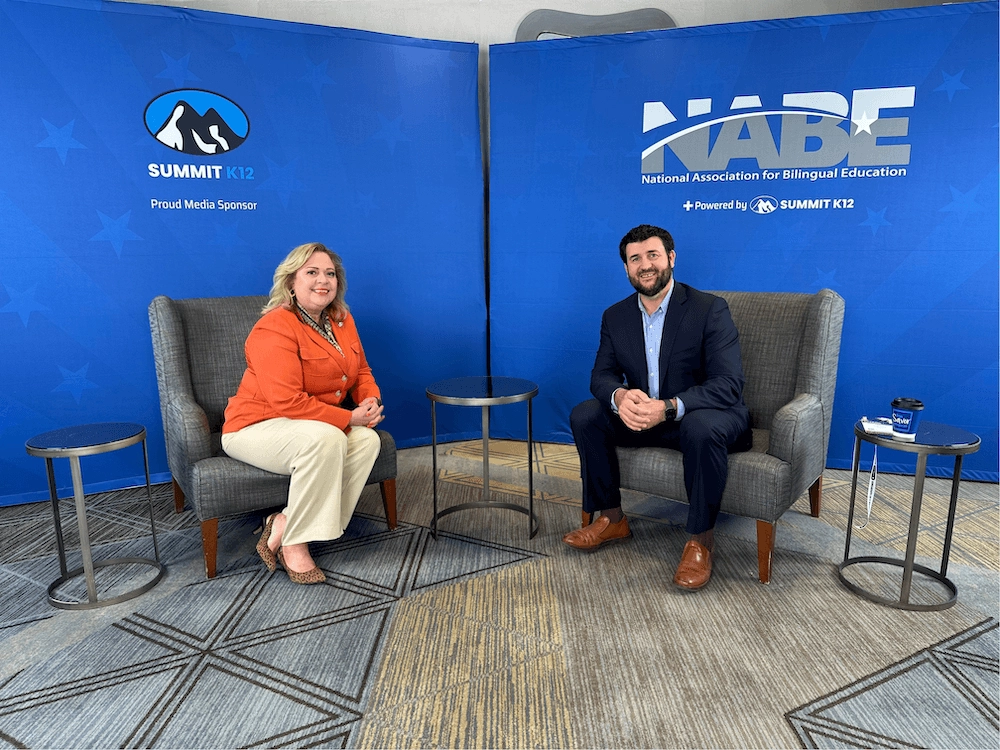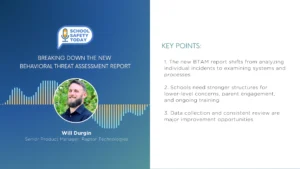What is Second Language Acquisition?

W Marshall, VP of Marketing at Summit K12 and Montserrat Garibay, Assistant Deputy Secretary & Director for the Office of English Language Acquisition at the U.S. Department of Education – on stage at NABE. Image taken by Ricardo Santiago.
What is second language acquisition and how can we best support our multilingual students?
When I was in middle school, I remember registering for my first Spanish 101 class. As a native English speaker, I was excited about learning a new language. My community had a significant mix of English and Spanish speakers, and I wanted to learn to speak and understand Spanish – while immersing myself in different cultures around me. I was fascinated to see how multilingual speakers could jump back and forth from one language to another without a blip in communication.
So began my journey toward learning a new language. I spent the rest of my years in education working on learning Spanish, from middle school to honors-level college-level courses. Knowing a second language has expanded my capacity for critical thinking, increased my career opportunities, and enhanced many travel experiences.
Although technological advances have enabled us to enhance and transcribe language, we still need to implement various strategies to ensure English learners have the best experience and the most sound outcomes in language acquisition.
As teachers, we must never forget that learning a new language requires time, patience, practice, and significant effort. Also, holding onto a second language requires ongoing use and practice throughout one’s life.

JW Marshall VP of Marketing at Summit K12 and Brandon Brown Founder and CEO of School Yard Rap on the media stage at NABE 2024 Image taken by Ricardo Santiago.
The variables mentioned above play a significant role in learning outcomes for all students. Other factors influencing robust language acquisition are students’ cultural and academic backgrounds, including the learning environment, the teacher, and the type of English language learning program you students are enrolled in at school. These factors play considerable roles in achieving the most vital possible outcomes.
For this article, we’ll focus on the basic theories of Second Language Learning acquisition, highlighting the contributions and processes created by Steve Krashen and Jim Cummins. We’ll also look at some interesting activities you can use with your multilingual learners.
What is Second Language Acquisition?
Second Language Acquisition (SLA—sometimes we refer to it as L2 acquisition) is the process through which people learn a second language. SLA is not just the act of learning but also a field of scientific study that examines and reflects on this process.
SLA involves various stages and factors that influence how a person learns a new language after their first language is established.
Learning Concepts about Second Language Acquisition
Interlanguage
Interlanguage is a concept in SLA that demonstrates the unique and systematic language system learners use. Second language learners are influenced by their native language while learning English simultaneously.
Input Hypothesis
Developed by linguist Stephen Krashen, this theory states that comprehensible input is essential for language acquisition. It distinguishes between subconscious acquisition and conscious learning of language.
Acquisition-Learning Hypothesis
This refers to the difference between acquiring a language naturally and subconsciously learning it through conscious study and instruction.
SLA is a complex process that can be affected by the learner’s age, environment, exposure to the language, and other cognitive factors. It’s a fascinating area of study that bridges linguistics, psychology, and education.
Multilingual Teaching: Theory and Application
There are various steps and strategies to consider when teaching in a multilingual classroom.
English has many metaphors, dialects, slang terms, unique spelling, and grammar exceptions, so it is critical to remember that it is not easy to grasp. Learning English requires ongoing rigorous work, time, dedication, and practice for students to succeed in all four learning domains: reading, writing, speaking, and listening.
Stephen Krashen and the Six Stages of Second-Language Acquisition
Perhaps no one has examined language acquisition more closely than Stephen Krashen. Krashen introduced some of the most influential concepts to the study of language in grasping second-language acquisition.
According to his site, Krashen is an expert in linguistics, specializing in language acquisition and development theories. Much of his recent research has involved the study of non-English and bilingual language acquisition.
Since 1980, Krashen has published over 100 books and articles and has been invited to deliver over 300 lectures at universities throughout the United States and Canada.
Second Language Acquisition
Krashen hypothesizes that second language acquisition is very similar to the process children use when acquiring their first language. He states, “Learning a second language requires meaningful interaction in the new language—natural communication—in which speakers are concerned with the messages they are conveying and understanding, not with the grammatical form of the language.”
Krashen also believes all learners undergo six stages before acquiring a new language.
What are the six stages of Second Language Acquisition according to Krashen?
The Six Stages of Second Language Acquisition (SLA) refers to how individuals learn a new language after acquiring their first language.
Preproduction Stage (Silent Period)
In this initial stage, learners are primarily silent and have limited comprehension of the new language. They may exhibit receptive skills by listening, but they have yet to speak aloud. At this stage, students communicate best with visual images, gestures, drawings, or other nonverbal means.
Early Production Stage
Learners will produce some words and phrases in the new language during this stage. Also, remember that vocabulary is still quite limited; therefore, sentence structures should be as simple as possible.
English Learners can typically respond to simple questions and engage in basic conversations using memorized chunks of language.
Speech Emergence Stage
During this stage, learners start communicating more fluently in the second language. They also begin to construct complex sentences and have a broader range of vocabulary. Communication and engagement with peers start to become more meaningful.
Intermediate Fluency Stage
In this stage, English learners begin to express ideas and opinions with greater accuracy. Also, students begin to express ideas and share views with more confidence.
Advanced Fluency Stage
Learners at this stage exhibit near-native proficiency in the second language. They can understand and produce English across various topics and contexts. Language use is more relaxed, and learners can make significant strides in handling academic vocabulary, reading with complete comprehension, and speaking.
Near-Native Proficiency Stage
The final stage of English Language Acquisition is similar to that of a native English speaker. At this stage, English learners have a strong command of the language, understand nuances, gestures, and expressions, and can now best relate to their new culture.
It’s important to note that these stages are generalizations and that individual learners may progress through them at different rates, in other ways, and at various times. Factors such as motivation, exposure to the language, opportunities for practice, and individual learning styles can all influence the speed and success of second language acquisition.
BICS and CALP: Determining Social Language vs. Academic Language

Judith Sauri NABE Treasurer and JW Marshall VP of Marketing at Summit K12 on the media stage at NABE Image by Ricardo Santiago.
In 1984, Jim Cummins invented the phrases BICS and CALP. How did Cummins arrive at this new theory? Cummins noticed his students were speaking English well in social settings. However, they scored low on written language tests.
Cummins discovered a significant difference between using social language amongst peers – speaking out loud in social settings came faster while moving toward the use of academic language took much longer.
He also identified two significant aspects of language acquisition. He found a crucial difference between ‘essential communication in English among peers within their social circles vs. English for academic purposes. With this knowledge, he discovered where the large learning gap originated. Cummins came up with the phrases BICS and CALP.








